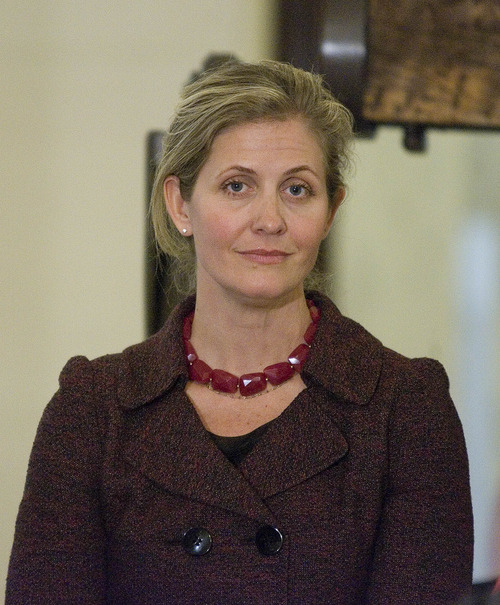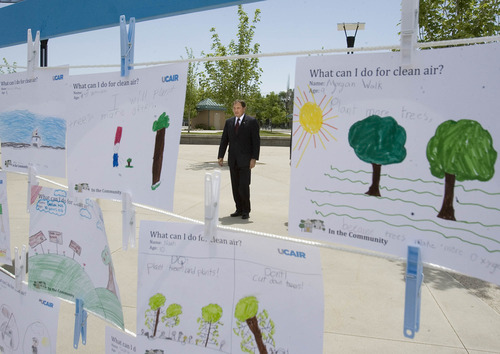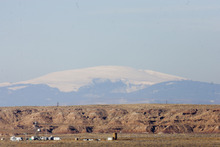This is an archived article that was published on sltrib.com in 2013, and information in the article may be outdated. It is provided only for personal research purposes and may not be reprinted.
Washington • Utah officials worry the Environmental Protection Agency may set an unachievable smog standard that would choke the economy more than it would clean the air.
Rep. Chris Stewart, R-Utah, led a hearing of the House's environment subcommittee Wednesday in which he said federal regulators should take into account naturally occurring ozone that tends to be far higher in Western states than in the rest of the nation.
The EPA has set an acceptable ozone standard at 75 parts per billion, and the agency intends to lower that level later this year, potentially down to 60 ppb, a move intended to protect people from illnesses exacerbated by breathing smog.
Some Utah counties can't meet that standard even if they eliminated human-caused pollution from cars and power plants, said Amanda Smith, executive director of the state's Department of Environmental Quality, who testified before the subcommittee.
"Setting an ozone standard that can't be met," she warned, "won't improve public health in Utah."
Smith told the House members about a monitor in the Canyonlands National Park area of San Juan County that has regularly found ozone levels at 70 ppb, even though the area has only about 14,000 residents and few human-made sources of pollution.
Stewart said the problem stretches throughout the West because of its higher elevations and the frequency of wildfires.
"An air-quality standard that cannot be met in Yellowstone or Canyonlands or Zion or the Grand Canyon is simply divorced from reality," he said.
The subcommittee's top Democrat, Rep. Suzanne Bonamici, of Oregon, supported the EPA's move to reduce acceptable levels of ozone in the air. She said the science on how the ozone impacts human health is "sound" and noted that health effects from pollution lowers worker productivity, hurts children and the elderly, and could harm crops.
Still, she was sympathetic to the situation described by Smith and Stewart.
"I'm cognizant of the argument that local conditions in the Intermountain West might require some new forms of flexibility," Bonamici said. "I encourage EPA to work with the states to develop such flexibility."
Stewart noted that the Salt Lake Valley often experiences inversions, largely because of the surrounding mountains.
"I have children, some of them have respiratory illnesses, which were aggravated by these conditions," he said." This is something all of us would like to address."
As it now stands, all of Utah's 29 counties meet federal smog limits, but if they are lowered, counties along the Wasatch Front and Box Elder and Tooele could fall into noncompliance. And recent studies of rural Utah, including places where there is no vehicle traffic, have shown that they could also be snagged by new regulations, depending on how much the EPA tightens smog limits.
Counties nationwide that fail to comply face construction restrictions and the loss of some federal funding.
"The consequences," Stewart said, "include draconian reduction requirements, severe economic sanctions, threats to highway funding and construction bans."
Russell Dickerson, a professor of atmospheric and oceanic science at the University of Maryland, said naturally occurring ozone is far lower in the East than in the West, and shouldn't be used to stop the EPA from setting a new standard that would improve air quality in much of the nation.
"I don't think it is appropriate to punish the people in urban areas in the eastern United States by maintaining looser standards," he said.
Stewart didn't disagree with Dickerson, but said the West shouldn't be "punished" by a federal rule that some areas would find impossible to meet.
The EPA allows waivers in "exceptional events," a process that Dickerson and Smith said is technically difficult to obtain. Bonamici and other witnesses said this process could be streamlined by either Congress or the agency to address the concern of Utah officials.
Twitter: @mattcanham







